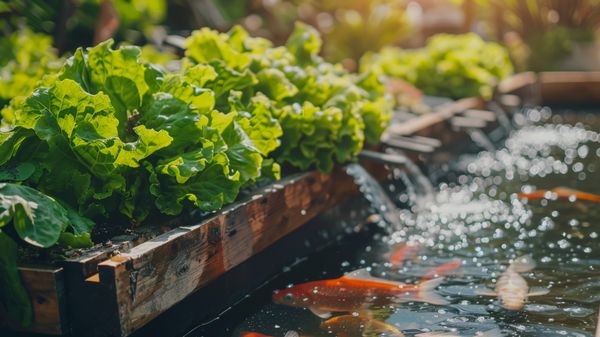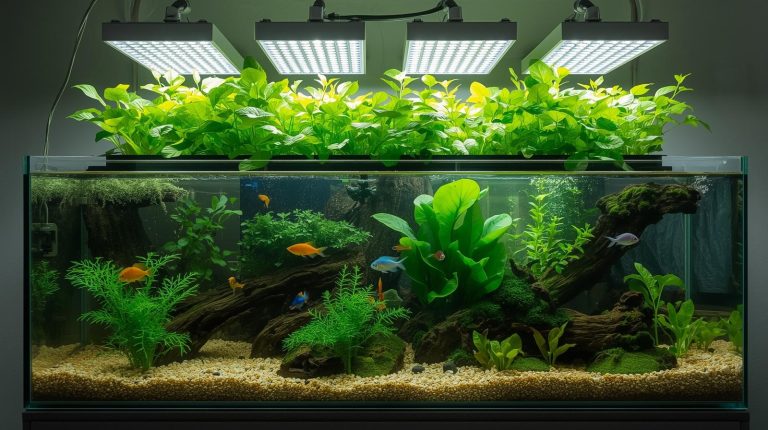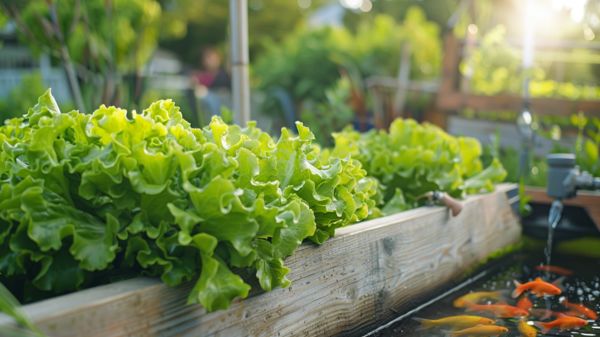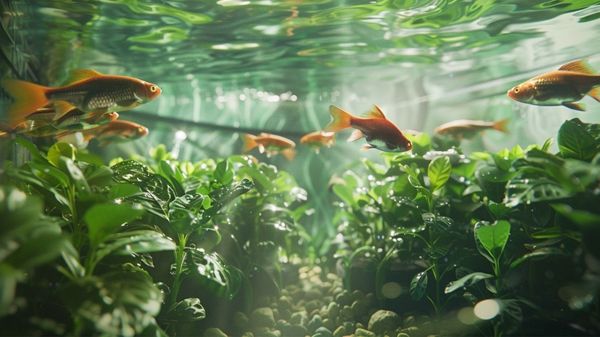To implement an aquaponics system in your backyard, start by evaluating sunlight exposure, water access, and space. Choose fish tanks made of inert materials and mechanical filters to manage waste. Confirm pump flow rate for plants and fish compatibility. Utilize non-toxic grow beds at proper depths.
Thoroughly install the pump and filter system for water quality. Opt for energy-efficient pumps and appropriate plumbing. Select fish based on temperature compatibility and market demand.
Monitor water quality diligently, test levels frequently, and maintain records for peak system health. Proactive management guarantees early issue detection for sustained efficiency and ecosystem balance.
Key Takeaways
- Conduct site evaluation for sunlight, water access, and space.
- Choose fish and plants compatible for nutrient balance.
- Install efficient pump, filter, and plumbing systems.
- Regularly test water quality and monitor parameters.
- Prioritize durability, maintenance, and system balance.
Planning and Design
When planning and designing your aquaponics system, it’s essential to carefully consider various factors to guarantee its efficiency and success. Begin by conducting a thorough site evaluation to assess sunlight exposure, accessibility to water and electricity, available space, environmental conditions, and temperature regulation capabilities.
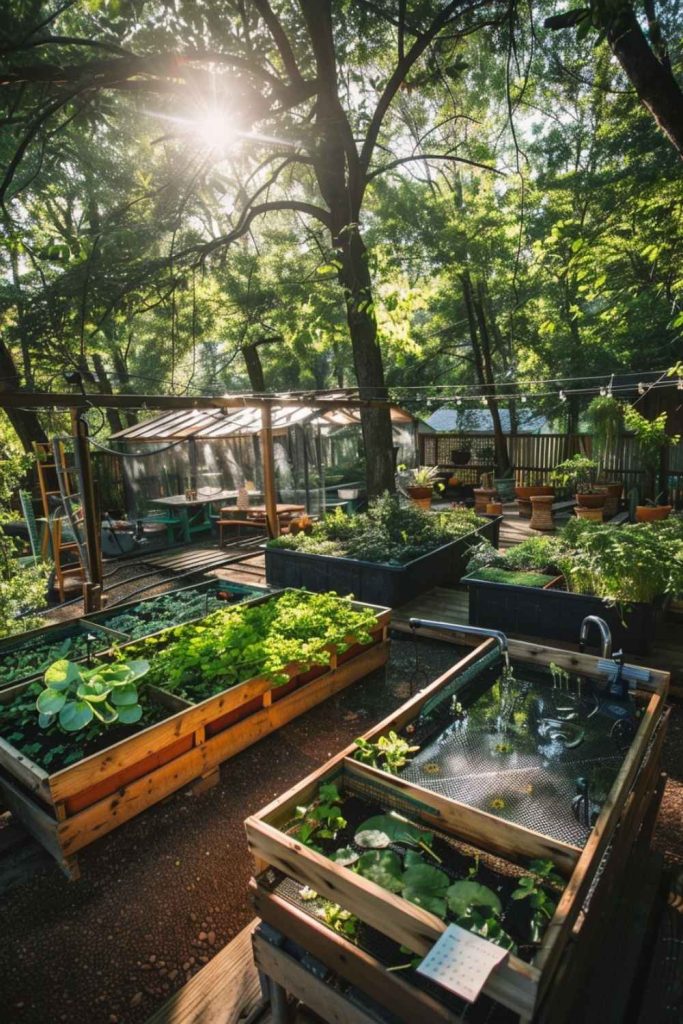
Optimize the layout by designing the system to maximize sunlight exposure, ensuring easy access for maintenance, and strategically positioning fish tanks and grow beds. Select a suitable location that can accommodate the system’s size and components, taking into account water flow management and potential water spillage prevention.
Pay close attention to the placement of fish tanks, sizing of grow beds, and the appropriate selection of pumps and plumbing components based on water volume requirements. Ensure that the space efficiency of your design allows for the most productive and visually appealing setup.
Component Selection
As you move forward with setting up your aquaponics system, the next crucial step lies in selecting the right components to guarantee its functionality and effectiveness.
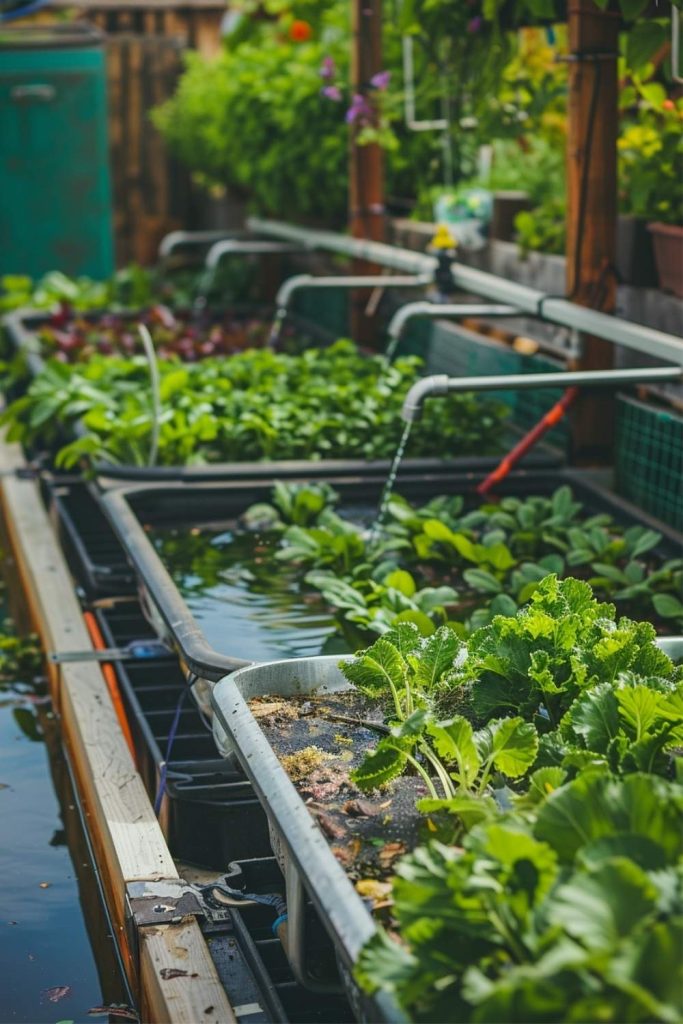
When choosing components, prioritize durability to promote longevity and efficiency. Opt for fish tanks made from strong, inert materials like fiberglass or UV-resistant plastic.
For mechanical filters, select ones that effectively remove solid and suspended fish waste to prevent clogging. Biofilters should have a large surface area and oxygenated water for efficient ammonia processing.
Verify the water pump has a suitable flow rate to support plant needs. When it comes to fish compatibility, consider the size, temperature tolerance, and market demand for the species you choose.
Additionally, select grow beds made from durable, non-toxic materials with sufficient depth and surface area for plant roots.
Moreover, considering the additional equipment needs(#) like a pH meter for water quality monitoring and an aquarium heater for maintaining ideal water temperature can also significantly enhance the productivity of your system.
System Setup
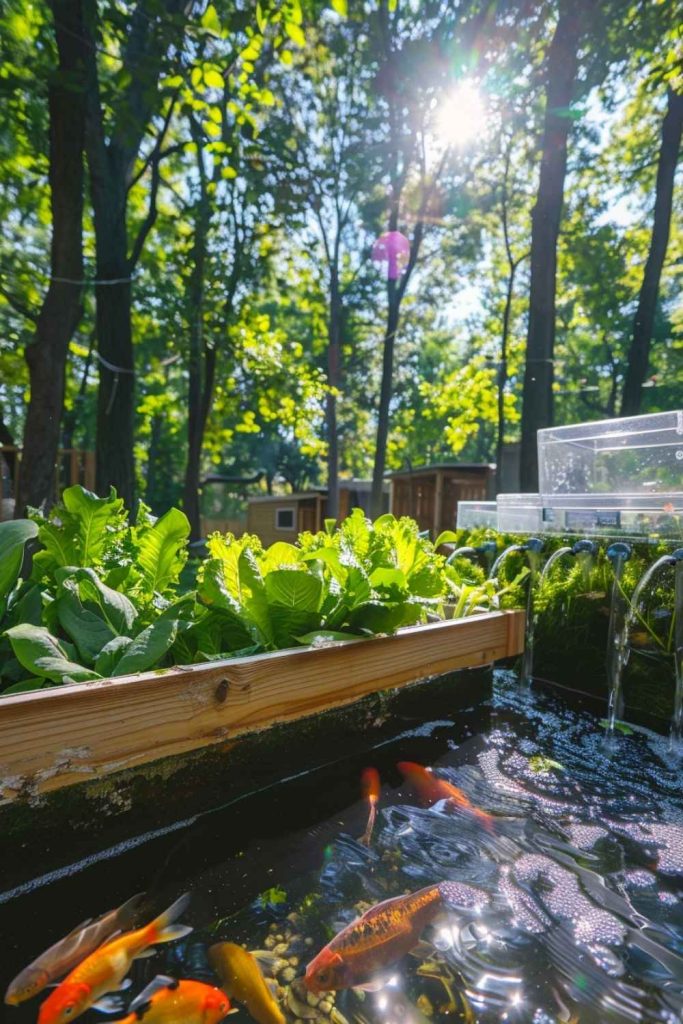
When setting up your aquaponics system, make certain the fish tank and media bed are appropriately sized to support plant growth. Install the pump and filter system meticulously to maintain water quality and circulation.
Configure the plumbing system with precision to assure efficient water flow between components for peak system performance. Aquaponic systems require proper sizing of the fish tank (aquaculture) to ensure a balanced ecosystem for plant growth.
Tank and Bed Sizing
Considering the foundational aspects of setting up an aquaponics system, one essential component to address is the sizing of tanks and grow beds.
When determining tank volume, calculate it based on the planned fish biomass, guaranteeing adequate space for growth and movement. Aim for a 1:1 or 2:1 ratio of grow bed volume to fish tank volume for ideal nutrient exchange.
Stock fish appropriately, following guidelines such as 1 inch of fish per gallon for smaller species or 1 pound of fish per 3-5 gallons for larger species like tilapia. Tank shape matters too; consider rectangular tanks for ease of placement or round tanks for better water circulation in larger setups.
For grow beds, maintain a 12-14 inch depth for effective root space and water filtration. Choose inert, non-toxic materials like gravel or clay pebbles for media to guarantee plant health. Prioritize durability and system flexibility in design for long-term success. Fish health and water quality are vital for successful aquaponics.
Pump and Filter Installation
To guarantee the proper functioning of your aquaponics system, the installation of the pump and filter is a critical step in setting up your system.
When setting up your pump, consider factors such as pump efficiency and filter types to enhance your system’s performance. Choose energy-efficient pump models to reduce operating costs while ensuring optimal nutrient delivery.
Below is a table outlining key considerations for pump and filter installation:
| Pump Efficiency | Filter Types |
|---|---|
| Choose energy-efficient pump models to reduce operating costs. | Select from mechanical, biological, or chemical filters based on your system’s needs. |
| Calculate the Gallons Per Hour (GPH) required for your system’s volume. | Mechanical filters trap debris, biological filters foster beneficial bacteria growth, and chemical filters remove impurities. |
| Verify the pump is compatible with the system’s layout and materials. | Regularly clean and maintain filters to sustain water quality. |
| Position the pump at the lowest point for ideal water circulation. | Monitor filter performance and replace as needed for effective filtration. |
| Test the pump for proper water flow and adjust as necessary. | Check for clogs or blockages in filters to prevent system disruptions.
Plumbing Configuration
For a successful aquaponics system setup, the plumbing configuration plays an essential role in guaranteeing proper water flow and system functionality.
When designing the plumbing layout, consider using 2-inch pipes for return and feed lines in larger systems. Bulkhead fittings are vital for creating watertight seals, especially when connecting IBCs to PVC pipes.
It’s recommended to have a stand pipe in the sump tank to prevent water overflow when the pump is off. Water exchange rate should be at least 1.5 times an hour in the fish tank. Gravity flow allows water to move from the solids lifting outlet to the filters and sump tank.
Pressure pipes are ideal for distributing water throughout the system. When scaling your system, remember that larger systems require larger pipe sizes to avoid backflow and overflow issues. Ensure accessibility for easy maintenance of the pump and sump tank.
Consider using bulkhead fittings for system flexibility and cost efficiency, as online shopping for these fittings can be more economical. Proper maintenance is crucial for ensuring the longevity and efficiency of your aquaponics system.
Fish and Plant Selection
When choosing fish and plants for your aquaponics system, it’s essential to contemplate various factors to ascertain a successful setup.
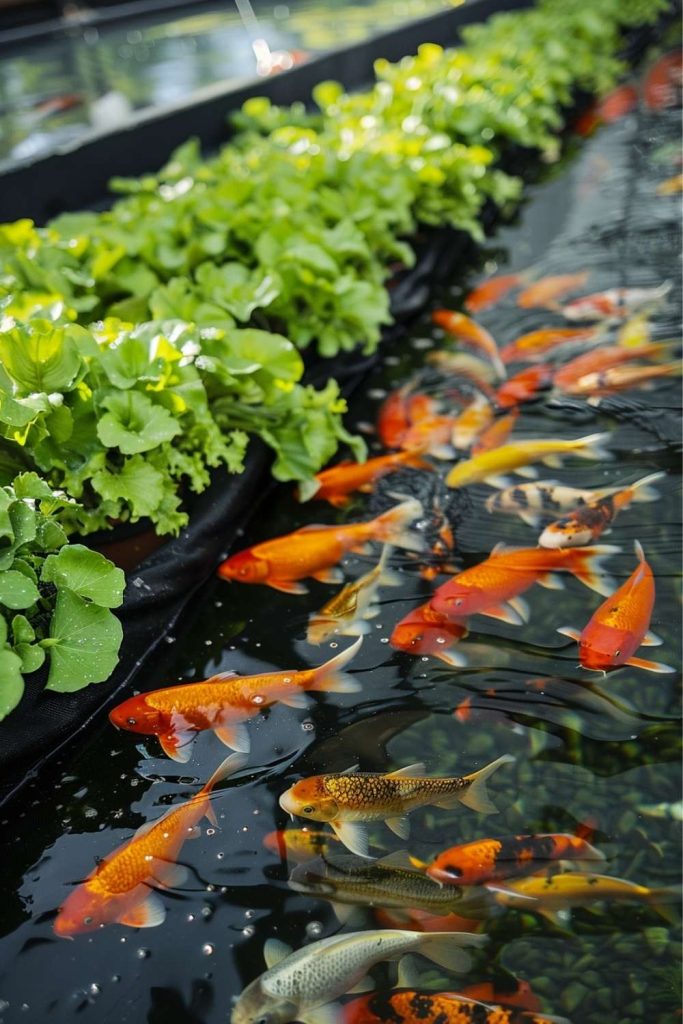
Consider the temperature tolerance, environmental adaptability, growth rate, feeding habits, and market demand when selecting fish species for your aquaponics system. Tilapia, trout, catfish, goldfish, and perch are suitable options due to their unique characteristics and benefits.
Ascertain compatibility between fish and plants by matching their requirements, maintaining nutrient balance, prioritizing sustainability, and considering space and maintenance needs. Select a variety of plant species that thrive on the nutrient-rich waste produced by the fish, such as leafy greens and herbs.
Additionally, practical considerations like local availability, system design, handling safety, regulatory compliance, and integration options should be taken into account to create a well-functioning aquaponics system tailored to your needs and environment. Fish species that are resilient and fast-growing can significantly contribute to the success of your aquaponics system.
System Maintenance
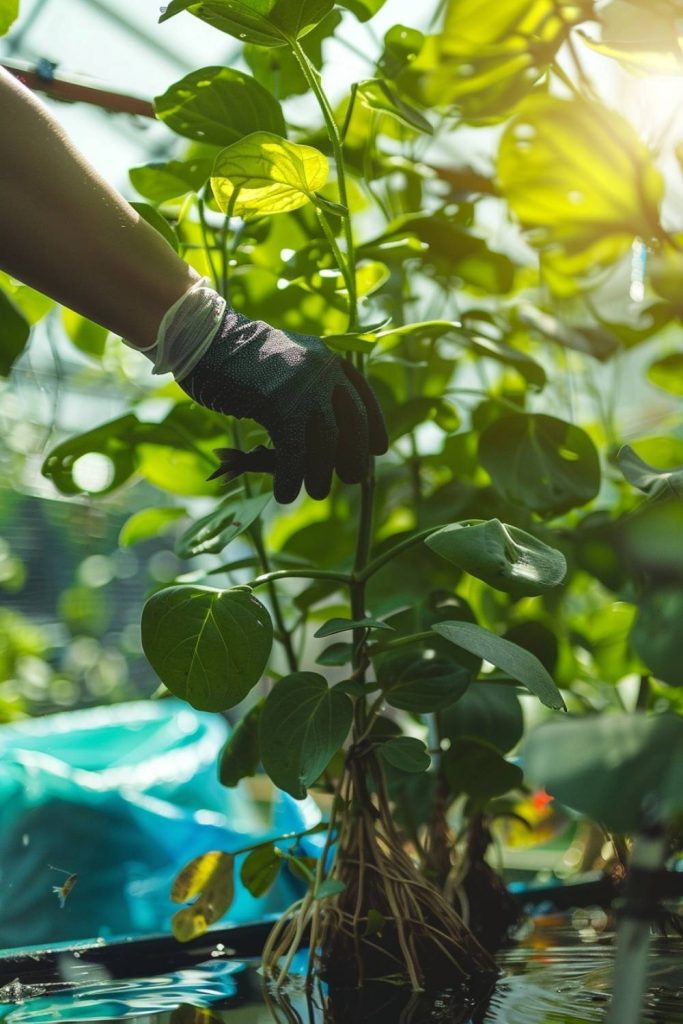
To guarantee ideal functioning of your aquaponics system, water quality testing and pH level monitoring are vital components of system maintenance.
Regularly testing for pH levels within the recommended range of 6.5-7.0 helps maintain a balanced environment for both fish and plants.
Monitoring water quality indicators such as ammonia and nitrites is necessary for the health and productivity of your aquaponics system. Regular maintenance tasks are crucial to ensure the long-term success of your aquaponics setup.
Water Quality Testing
Ensuring proper water quality is essential for the successful maintenance of your aquaponics system. Regular water testing is important to monitor key quality indicators such as ammonia, nitrite, nitrate, pH, and dissolved oxygen levels.
You can utilize multiparameter kits, electronic meters, API test kits, DO meters, and colorimetric tests for accurate measurements. Monitoring parameters like ammonia, nitrite, nitrate, dissolved oxygen, water temperature, alkalinity, and hardness is crucial to the overall health of your system.
For new setups, daily testing is recommended to closely observe critical parameters, while established systems can shift to weekly testing once stability is achieved. Keeping detailed records and visually monitoring fish behavior and plant health will aid in tracking trends and identifying any necessary adjustments.
Regular monitoring of these parameters allows for proactive management and early detection of any issues.
Ph Level Monitoring
For ideal system maintenance in aquaponics, monitoring the pH levels is essential. pH plays a key role in balancing the needs of fish, plants, and beneficial bacteria within the system.
- pH Fluctuations: pH levels can vary due to biological processes like nitrification and substrate usage.
- pH Indicators: Using wide-range pH indicators is critical for accurate testing and maintenance.
- pH Stabilization: Regular monitoring allows for timely adjustments to keep pH within the ideal range.
To guarantee ideal pH levels in your aquaponics system, it’s important to monitor and adjust pH regularly.
Test your water at least once a week using pH meters, test strips, or kits. Keep an eye on pH fluctuations and make necessary adjustments using additives or buffering agents like calcium carbonate.
Common DIY Systems
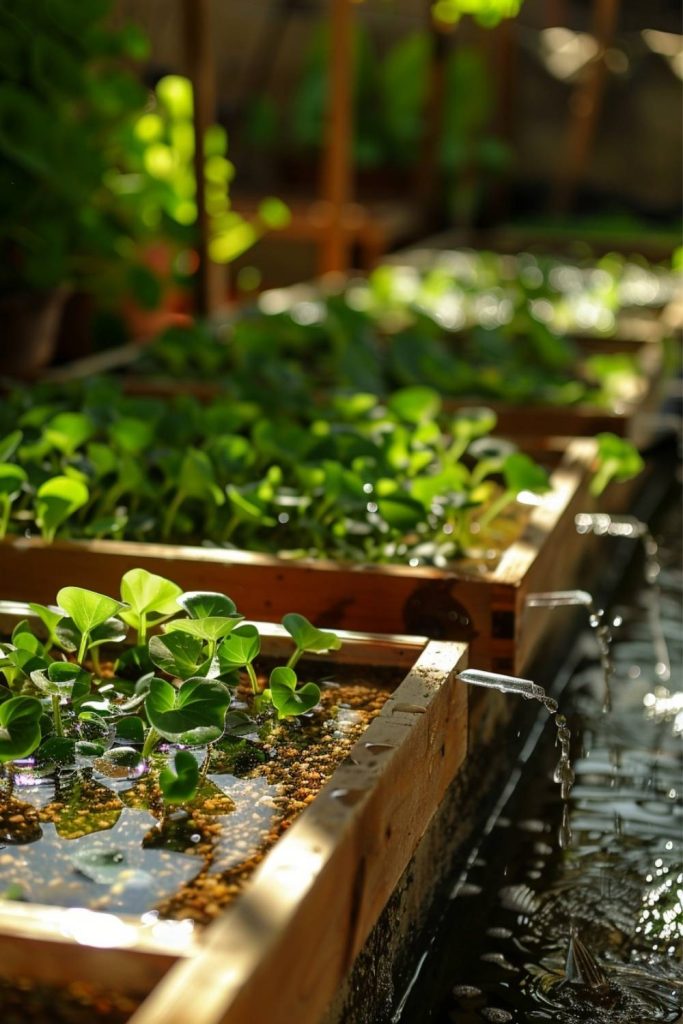
If you’re looking to set up an aquaponics system on your own, exploring common DIY systems is a great starting point.
One popular option is the Barrelponic System, which utilizes a 100L/22gal drum, making it suitable for small spaces and easily expandable. Its benefits include cost-effectiveness at around AUD $145 for components and the use of recycled materials and readily available plumbing supplies.
Another common DIY system is Media-Based Aquaponics, ideal for beginners and small spaces. This system supports various plants and is easy to maintain.
When setting up a Media-Based Aquaponics system, consider using clay pellets, gravel, or lava rock as growing mediums.
Remember, consistent water flow is essential for nutrient distribution and preventing stagnation.
Tank and Bed Sizing
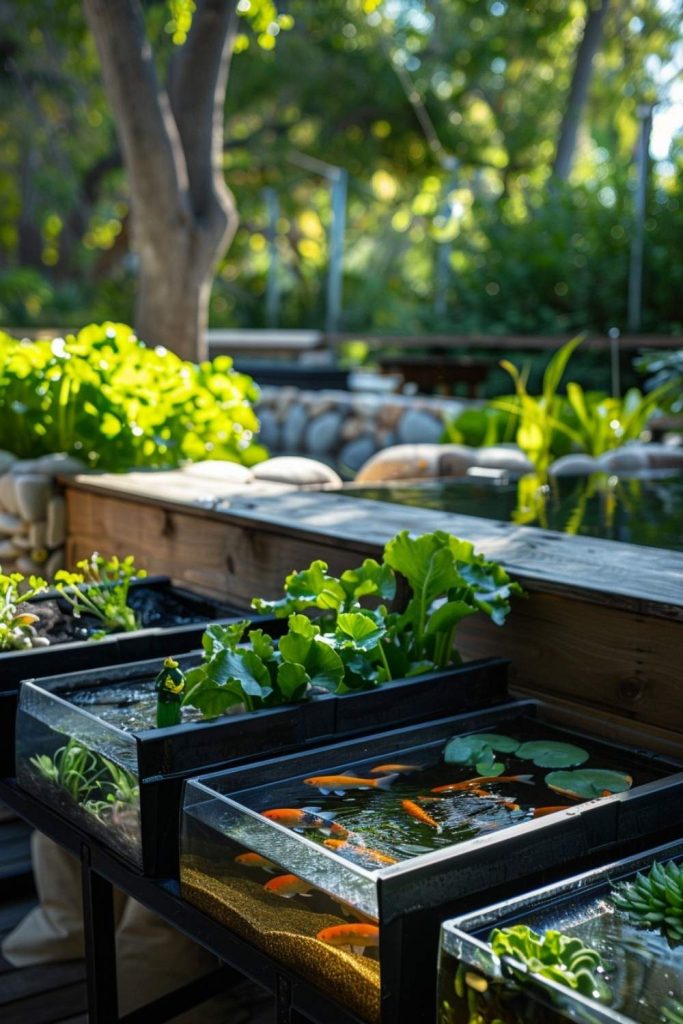
Exploring the practical aspects of setting up your aquaponics system, understanding the considerations for tank and bed sizing is essential to establishing a functional and efficient setup.
When determining the tank size, keep in mind factors like fish growth, biomass calculation, and tank stability.
Consider these vital points:
- Fish Growth: Larger tanks promote better fish growth and system stability.
- Biomass Calculation: Calculate tank volume based on fish biomass to prevent overcrowding.
- Space Requirements: Guarantee sufficient space for fish movement and species-specific needs.
For bed sizing, focus on space optimization, media selection, and depth considerations:
- Media Selection: Choose a suitable grow medium like gravel or clay pebbles.
- Depth Considerations: Maintain a depth of 6-12 inches for root growth and water circulation.
- Space Optimization: Design beds to maximize growing area within your available space.
Pump and Plumbing
Setting up the pump and plumbing for your aquaponics system is essential for guaranteeing proper water circulation and nutrient distribution.
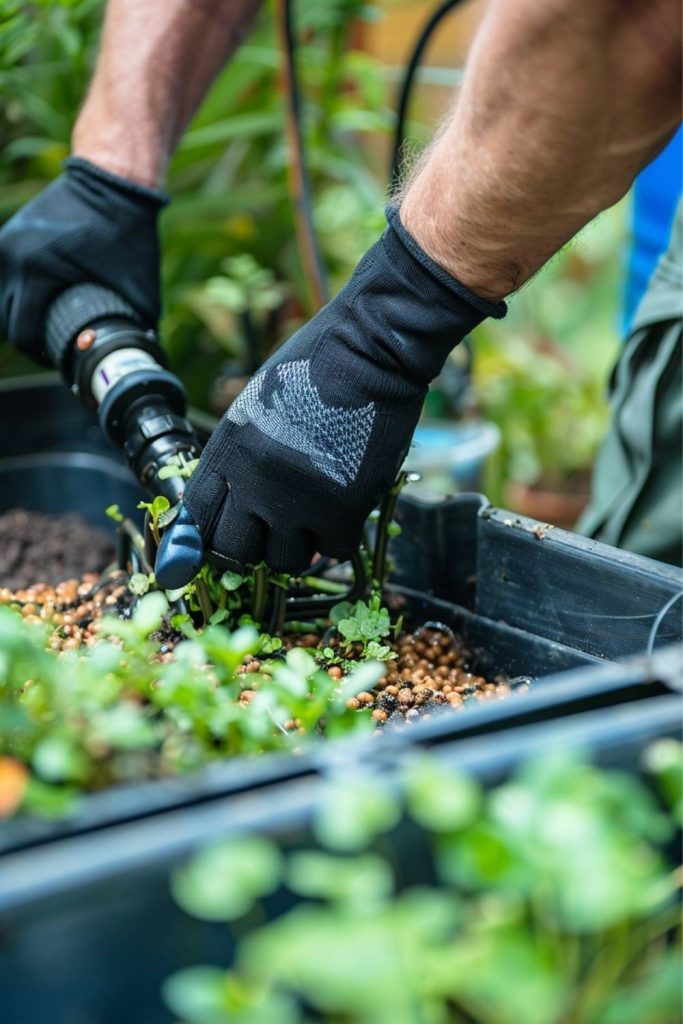
When selecting a pump, consider the different types available, such as submersible pumps that sit in the water and inline pumps used in larger systems. The pump’s Gallons Per Hour (GPH) rating should meet the minimum requirement of circulating the system’s water volume every two hours.
Ascertain proper pump placement at the lowest point in the fish tank or sump to maximize water circulation efficiency. Utilize strategic positioning for different system types like media bed or NFT systems to promote uniform water distribution.
When it comes to plumbing, consider using poly tubing for flexibility and ease of use, while PVC pipes are ideal for rigid applications. Confirm accurate measurements and proper fittings to avoid leaks and guarantee efficient water flow.
Monitoring water flow regularly and troubleshooting any issues promptly will help maintain superior pump efficiency and nutrient distribution.
Water Quality Monitoring
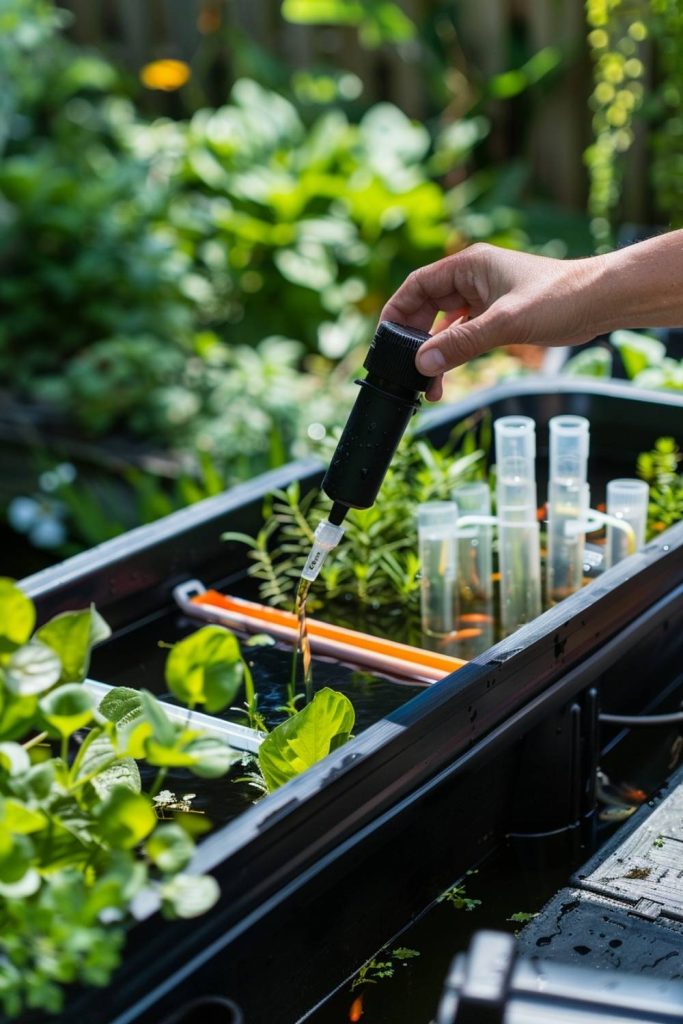
Maintaining proper water quality in your aquaponics system is essential for the health and significance of your fish and plants. To sustain optimal water quality, here are key considerations:
- Regular testing is critical to monitor water quality parameters such as pH levels, ammonia, nitrite, and nitrates.
- Implement strategies like increasing biological filtration, adjusting fish stocking density, and conducting regular water exchanges to enhance water quality.
- Utilize tools like water test kits, thermometers, and API test kits for monitoring important parameters.
Testing frequency plays a fundamental role in water quality management. Daily testing is recommended for new systems to promptly address any issues that may arise.
In established systems, weekly testing is sufficient to guarantee stability. By staying vigilant with water quality monitoring and taking proactive measures, you can create a thriving aquaponics system that supports the well-being of your fish and plants.
Frequently Asked Questions
Can I Use Rainwater in My Aquaponics System?
You can use rainwater in your aquaponics system after proper filtration and water quality testing.
Implement a robust rainwater filtration system to remove contaminants and maintain water purity. Regular monitoring and testing of water quality are essential to guarantee the safety of your fish and plants.
Consider pH adjustments and nutrient supplements as needed to optimize the environment for a successful aquaponics setup using rainwater.
How Do I Prevent Algae Growth in My System?
To prevent algae growth in your system, guarantee proper algae control by focusing on nutrient balance. Maintain efficient water circulation to prevent stagnation, balance system size for peak flow, and use efficient pumps.
Manage nutrient levels by balancing fish stocking, enhancing plant density, and controlling feed input. Implement light control measures and conduct regular maintenance, including water testing and system cleaning.
What Fish Species Are Best for Beginners?
When considering fish compatibility for beginner aquaponics enthusiasts, Tilapia and Catfish stand out as resilient options adaptable to various systems.
Tilapia requires specific water conditions but offers fast growth, while Catfish can thrive in different sizes and conditions. For a cooler setup, Trout suits indoor environments with its slow growth.
Goldfish are hardy and suitable for smaller setups, while Koi excel in larger systems with proper water management.
Do I Need a Backup Power Source for My System?
You should consider a backup power source for your system to safeguard against power outages that could jeopardize system efficiency.
Backup options like solar panels, generators, and battery systems can guarantee continuous operation, preventing oxygen depletion, water stagnation, and plant death.
Integrating backup power sources into your system design is essential to maintain a seamless shift during outages, reducing the risk of economic loss and system collapse.
How Do I Handle Pests Naturally in Aquaponics?
To handle pests naturally in aquaponics, introduce beneficial insects like ladybugs and lacewings for biological control. Use predatory fish such as goldfish to manage snails and slugs.
Implement beneficial bacteria to combat algae growth. Employ parasitic wasps against aphids and whiteflies. Foster natural predators in the environment surrounding the system. Regularly monitor and adjust these natural pest control methods for maximum effectiveness.
Conclusion
In summary, when setting up an aquaponics system in your backyard, remember that proper planning and design are paramount. Make sure that components are selected carefully, the system is set up correctly, and fish and plant selections are made thoughtfully.
Regular system maintenance and water quality monitoring are essential for successful operation. By following these steps diligently, you can create an efficient and sustainable aquaponics system that will yield bountiful results.

